Resolve HID Compliant Touch Screen Missing from Device Manager
HID-Compliant Touch Screen goes missing in the device manager when either the touch screen was disabled manually by the user or when the system fails to install the touch screen drivers by default in the system. The HID-Compliant Touch Screen is usually located under Human Interface Devices in Device Manager.
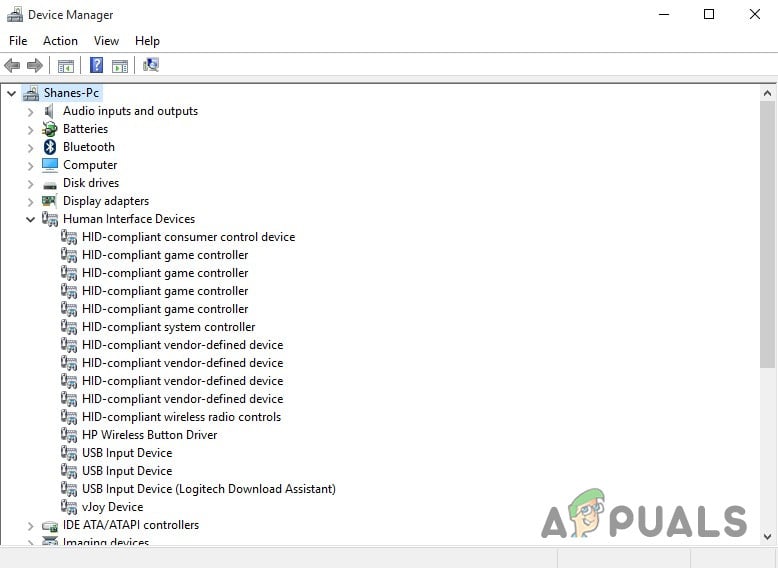
Now before moving on with its troubleshooting of touch screen not working, we have to make sure that whether the issue is software or hardware.
Hardware or Software Issue:
The best way to identify if it is a hardware or a software issue is to check if the Touch is working on the system’s BIOS screen. Boot or reboot the system, and access the BIOS screen (normally you can access it by pressing F10 when the system is booting).
Now in the BIOS try to use the touch screen. If you can use the touch screen in the BIOS, then it is a software issue and if you cannot use the touchscreen in the BIOS, then it is a Hardware issue.
Moreover, many manufacturers have given touchscreen tests in their BIOS which can be used to check the functioning of the touch screen. You can also use UEFI Hardware Diagnostics Menu by the manufacturer of your system e.g. HP users can Download HP PC Hardware Diagnostics Menu and install it.
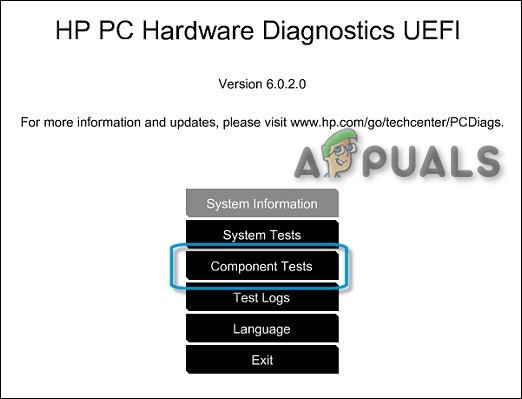
Inside the component test, there is an option for the Touch Screen Test – this is a quick interactive test to find if the touch screen is functioning correctly. If Touch Screen Test is not shown in the test screen, then it is a Hardware or firmware/BIOS problem.
You can also use Windows 10 Bootable Media to test the functionality of the touch screen. Insert that media in the system and boot from that media. To create installation media and boot from it, please follow steps here. We will not be installing the Windows at this stage but just use touch to move between the interface. If you cannot use the Touch Screen in the Windows Installation Setup then it is a hardware failure.
If it is a hardware failure then you should contact a hardware repair service or use the system without the touch screen.
If touch is working in any of the above cases then it is a software issue and you should follow the undermentioned methods to solve the issue.
Solution 1: Show hidden devices in Devices Manager
In Device Manager, there are two types of hidden devices. The first type is typical non-plug and play drivers, printers, etc. and the second type is Phantom devices that are not connected to the computer. First and the foremost point to check is that you have not accidentally hidden the HID-Compliant Touch Screen, and if so, then unhiding the HID-compliant touch screen can solve the problem.
- Press the Windows key and R simultaneously to open the “Run” command box, then type “devmgmt.msc” in it & press “Enter” to open device manager.

Run devmgmt.msc - Then on the Menu Bar of Device Manager click on the View Menu & then click on the “Show hidden devices”.
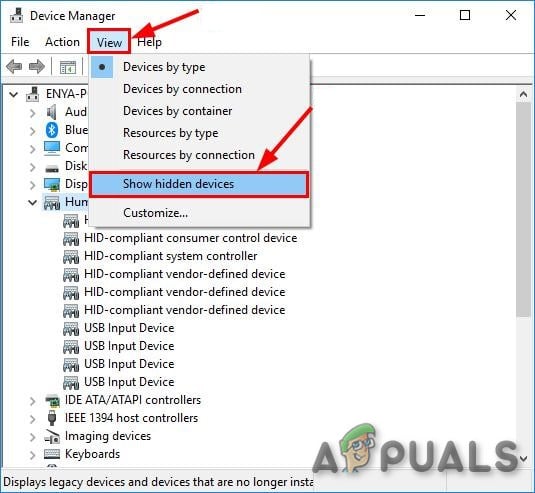
Show Hidden Devices - Now Click Action Menu and then click on “Scan for hardware changes”.
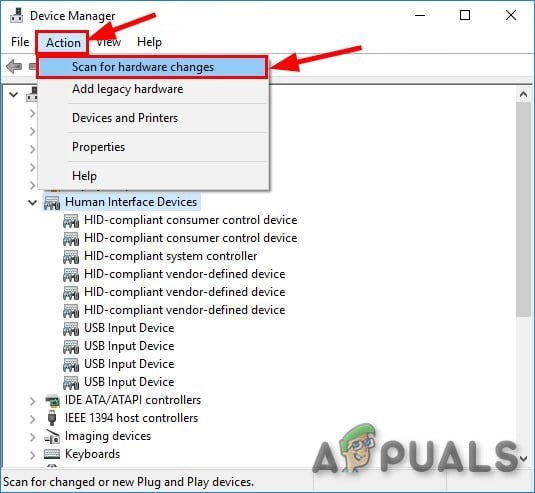
Scan For Hardware Changes - Check if the HIP Compliant touch screen is showing under Human Interface Devices. Right-Click it and Unhide it and then you are good to go.
Solution 2: Run Hardware and Devices Troubleshooter
Microsoft has an automated tool “Hardware and Devices Troubleshooter” which checks the hardware connected to the computer for any known issues with it and provides the details on how to fix them. This tool is easy to operate. It is also good at detecting & fixing the problem of devices not installed which are connected to your system.
For Windows 10:
- Press the “Windows” key and type“troubleshoot”, then click on the Troubleshoot.

Open Troubleshoot from Windows Search Box - Click Run the troubleshooter after clicking on Hardware and Devices.

Click on the Run the troubleshooter - Click Next and follow the instruction displayed on the screen to fix any issue that it detects.
- Now Open the Device Manager and check if HID Complaint Touch Screen is shown there.
For Windows 8.1/7:
- On your keyboard, press the Windows logo key and type troubleshoot, then click Troubleshooting.
- Click Configure a device.

Configure a device in Troubleshooter - Now Click on the Next and follow the instructions displayed on the screen to fix any issue that it detects.
- Open the Device Manager and see if HID Complaint Touch Screen is shown there.
When the troubleshooting process is complete, open Device Manager again & see if the HID-compliant touch screen is shown there. If not move to the next solution.
Solution 3: Uninstall & Reinstall the Touchscreen and Update Chipset Drivers
The system may not work the way it is supposed to if its drivers are not regularly updated. This problem may occur if you are using an outdated HID-compliant driver or it is also possible that the drivers for the touch screen were never installed as the device was disabled. Because of this, you cannot enable the device unless you install the correct drivers.
We will use the following three steps to solve the problem. But before moving on make sure that you have admin privileges.
Step 1: Uninstall the Ghost Drivers
First, we will remove all the ghost drivers which aren’t really active but keep appearing in your device manager.
- In the Windows Search Box type “Command Prompt” and Right-Click on the first result and click on “Run As Administrator” with admin privileges.

Open Command Prompt from Windows Search - In the command prompt, type:
set devmgr_show_nonpresent_devices=1
& hit Enter. There will be no output displayed for this as we are just enabling a setting that enables displaying the hidden devices in the device manager.
- Now in the command prompt type “devmgmt.msc” to open Device Manager & Press Enter to launch the Windows Device Manager.

Run set devmgr_show_nonpresent_devices=1 in Command Prompt - Click on the View menu in the Device Manager and then click on Show Hidden Devices.
- This will display the list of devices, drivers, and services that were not installed or uninstalled properly. Now when you expand the different devices & drivers in the device manager, the devices that Windows currently detected as installed on your PC are shown. Also, the devices which have been loaded in the past but were not uninstalled or are not currently started are also displayed. Now find the offending device, right-click on it, & click on uninstall to remove it from the system completely. Do note, that if the devices are grey, it does not mean that we should delete them. Only remove those devices/drivers which you think are causing issues. Be careful about deleting devices which you don’t know about.
- Now restart the system after performing the above actions.
After the system is restarted, open the Device Manager & then click on “Scan for hardware changes” button near the top of the Device Manager window & see if the Windows has detected the Touchscreen device & an appropriate driver is automatically installed for it. If the driver is automatically installed, then confirm if the touch is working. If touch is not working or Touch Screen is not shown, then go to the next step.
Step 2: Use Windows updates for any latest driver updates.
Checking Windows updates can be a way to fix this issue. Most of the OEMs now deliver the update through the Windows Update delivery channel, and they are tested for compatibility. Windows update will update all the drivers including touch screen drivers and its related drivers such as chipset drivers which are reported by many users to help them in resolving this particular issue. Even if Windows offer an optional update, install it.
For Windows 10
- Press the Windows button, type “Check for updates” and in the resulting list click on “Check for updates“.

Check For Updates in Windows Search Box - In the window displayed, click on the “Check for updates“.
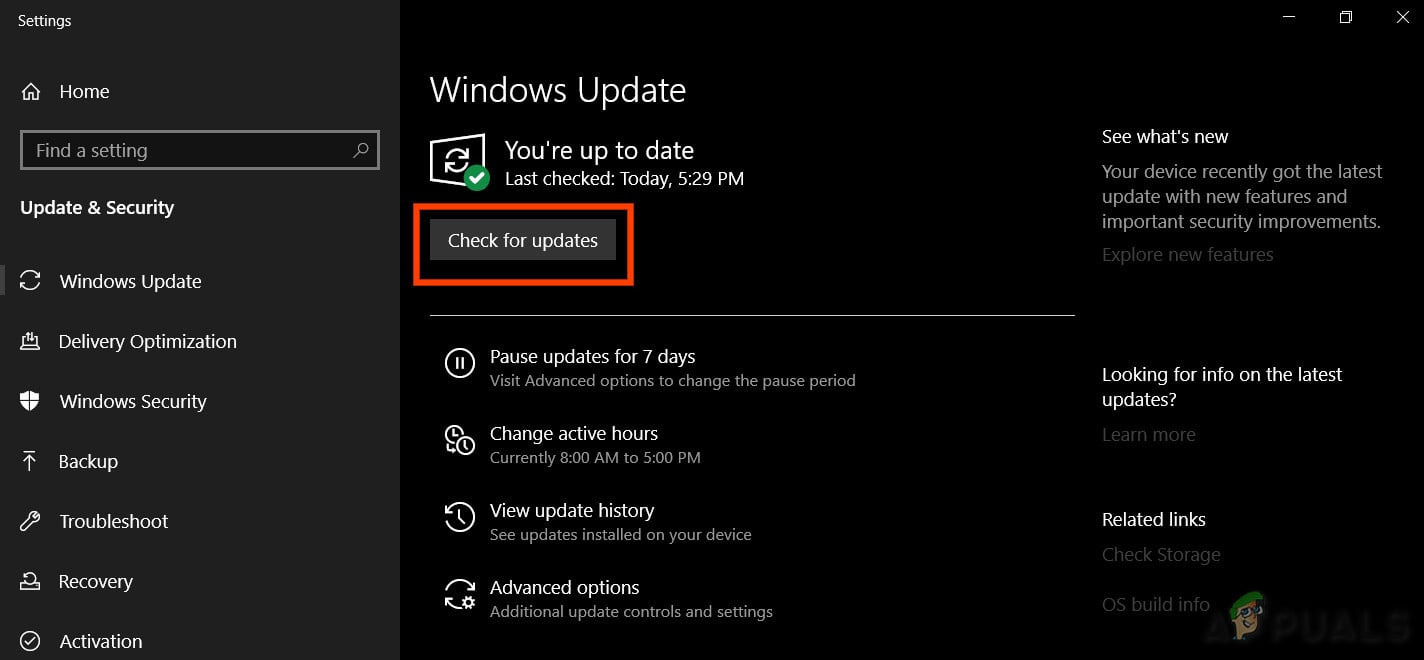
Check For Updates - If updates are available, install them.
For Windows 8
Install the latest Windows 8 updates.
- Click the Windows icon, and then search for and open Windows Update.
- Click Show updates.
- Click important updates are available.

Windows Update in Windows 8 - A list of available updates will be opened in a new window. Select updates from the Important as well as Optional sections. Make sure you install all device driver updates.
- Click Install.
You might need to restart the system computer to apply the updates.
After updating the system, check the touch screen to see if it is working. If not, continue to the next step.
Step 3: Update Driver Software from the OEM’s website:
If you cannot find the driver of your touch screen by Windows Updates, then go to the OEM website and find the driver of your device model and then install it by following the instructions given by the OEM website or displayed on the screen during installation. Also, you can use your service tag to find the particular drivers. Update the chipset drivers, Graphics Card Drivers, and Monitor Drivers provided on the portal.
If you know details about the driver of your system you can use Update Catalog to download the driver by putting it in the search box of the update catalogue website. You can also use this website to find if you know any old driver working with your touch screen.
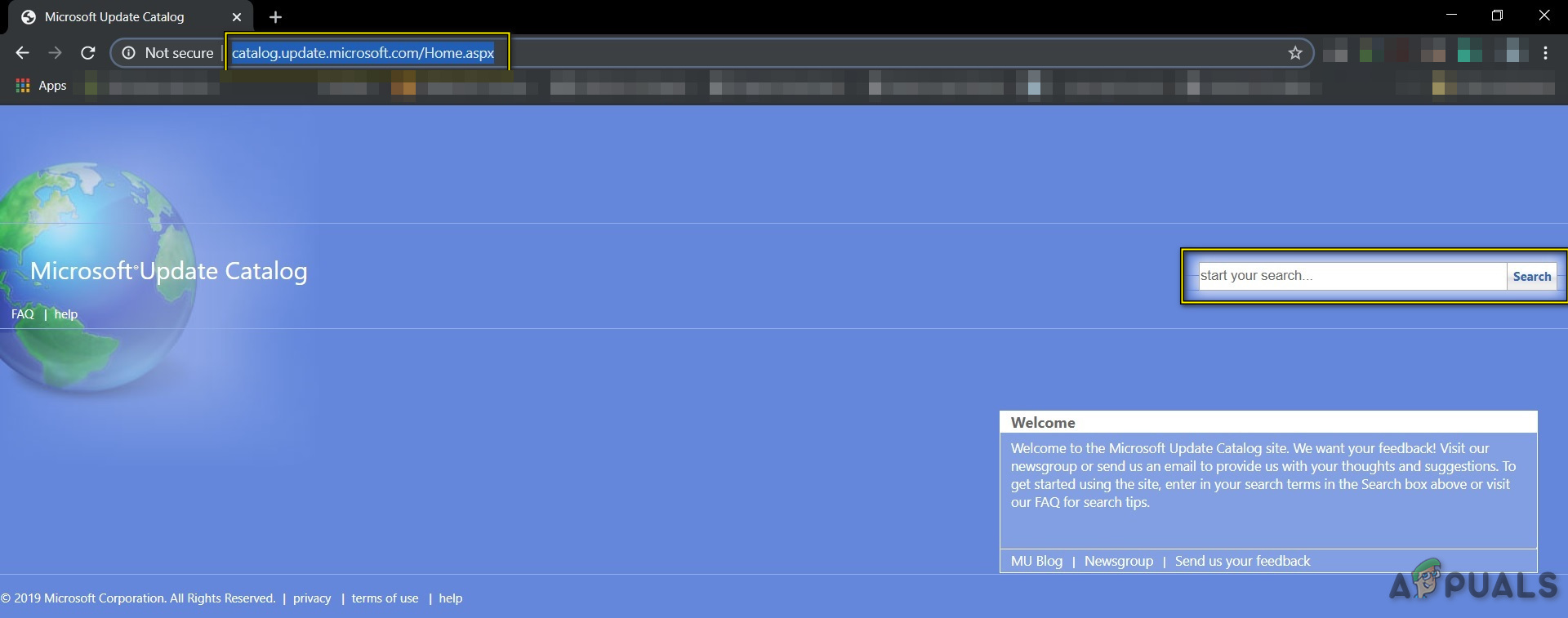
After updating drivers check if the HID-Complaint Touch Screen is showing in the Device Manager, if not move to the next solution.
Solution 4: Uninstalling Conflicting Windows Updates
Update KB4480116 is known to cause the Touch Screen issue. If that is installed on the system, then uninstalling it may solve the problem. You can perform similar actions for other Windows updates accordingly if they broke your touchscreen drivers.
- Open Windows Settings by pressing Windows+I keys simultaneously.
- Then click on Update & Security.

Update & Security.in Windows Settings - Then click on Windows Update and then click on “View Update History”.

View Update History - Then click on “Uninstall Updates”
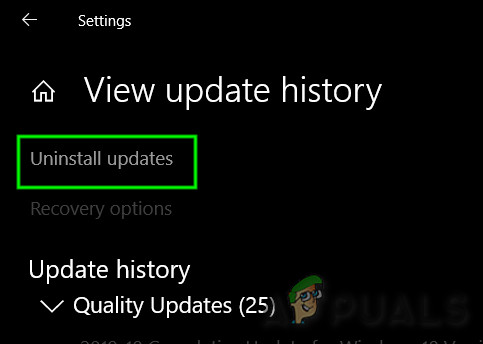
Uninstall Updates - Then uninstall the Update KB 4480116.
The update KB 4480116 will be installed again automatically if not blocked. Use the following steps to block it:
- Download the KB update (KB3073930) that lets users block or hide Windows or driver updates.
- After downloading, launch it and then click Next, wait while it detects pending Windows Updates.
- Click the Hide Updates menu.
- Scroll through the list then select the update KB4480116. Check the checkBox next to the update name then click on “Next” to confirm the changes.
Now check if the touch screen is working fine, if not try the next fix.
Solution 5: Configuring the Touch display
If the touch screen driver is not working, then configuring the touch display to identify your screen as a touch screen can make it to work and thus the problem can be solved.
- In Windows search box type & open the “Calibrate the screen for pen and touch input”.
- On the Display tab, click Setup.

Setup in Display Tab - Click Touch input.

Touch Input - Follow the directions displayed on the screen to identify your screen as a touch screen.
- Tap the screen to see if it responds. If it is not, try the next step.
Solution 6: Perform a Microsoft System Restore
Microsoft System Restore is designed to create a snapshot of the device & save the working state at that point as a “restore point”. A restore point is then used in reverting the system to an earlier point of time when everything was working fine. So, reverting the system to an earlier time when your touch screen was working fine can also solve the problem.
So, let us restore the system to a restore point. You can use any of the restore points but restoring to the latest restore point is recommended.
After the system is restored and the touch screen still does not work, proceed to the next solution.
Solution 7: Change the Related Registry Value
The registry holds the key value in Windows OS and if any of its values are wrongly configured then it can create a lot of problems in the operation of the system. And if due to any problem registry value of the touch screen driver values is changed to zero then the user will not be able to use the Touch Screen, so, reverting it to 1 may solve the problem.
- Open Windows Search & type “regedit”
- In the list displayed, find the “regedit” and Right-click it and then click on the “Run as administrator”

Run Registry Editor as Administrator - Navigate to
HKEY_CURRENT_USER\Software\Microsoft\Wisp\Touch
- Change the “TouchGate” value to ‘1‘
- Exit the registry edit and then restart the system.
Check if the touch screen has started to work, if not move to the next solution.
Solution 8: Repair Windows
Windows 10 allows its users to reset their systems which will return the computer’s OS to its factory settings and all the applications, drivers, services that did not come with the computer will be uninstalled, and all changes made by the user to the system’s settings & preferences are nullified. As far as the user’s files and data stored on the computer are concerned, the user will be prompted to opt-out from either to keep them or remove them while resetting the computer
- Ensure your PC is off.
- Press the power button to turn on your PC and when you see the Windows logo hold the power button down until PC shuts down automatically.
- Repeat the above steps thrice.
- Automatic Repair screen will pop up.
- Then wait for Windows to diagnose your PC.

Diagnosing Your PC - When the “Startup Repair” screen appears and says it could not repair your PC then Click Advanced options.

Automatic Repair - Click Troubleshoot in the Windows Recovery Environment.

Troubleshoot in Windows RE - On the Troubleshoot screen, click Reset this PC.

Reset This PC - Choose whether you want to keep or delete your files and apps.

Keep or Remove Files in Reset PC - Click “Reset” to proceed.
Solution 9: Update BIOS
BIOS is the main component of the system. If BIOS cannot communicate with the device then the OS cannot communicate with that device. So, Update the BIOS but be warned that you may brick your system.
To update BIOS of your system, follow our undermentioned articles.
Warning: Proceed at your own risk as interrupting or failing to update the BIOS at any point might brick your computer and non-recoverable damage to the whole system.




